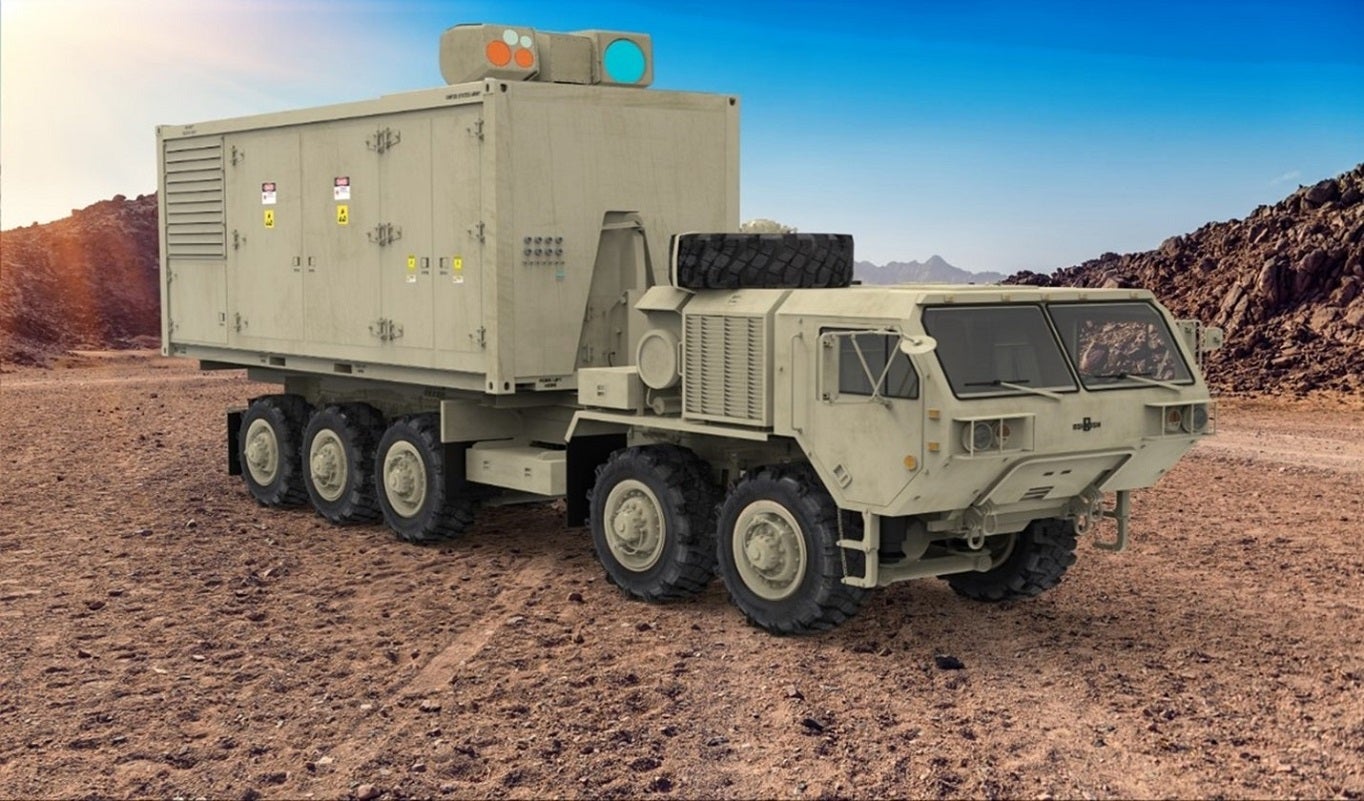
The US Army has selected Lockheed Martin to develop two 300kW laser countermeasure prototypes under the service’s High Energy Laser (HEL) project; one of two directed energy weapon (DEW) concepts that come under the Army’s Indirect Fire Protection Capability programme.
Directed energy weapon systems comprise lightweight hardware and can engage targets instantaneously, offering a solution to ever-changing threats and reducing the logistical requirements associated with traditional kinetic weapons.
It can engage targets at the speed of light with high precision, limited collateral damage and no time of flight. It can also provide a deeper magazine at a lower cost per shot than conventional munitions.
HEL will complement other layered defence components, enabling rapid response and precision engagement to safeguard stationary and partially stationary sites against rockets, artillery, mortars, unmanned aerial systems and both rotary and fixed-wing threats.
The US Army plans to field up to four operational 300kW-class IFPC-HEL prototypes integrated into tactical military vehicles by 2024.
Building on recent milestones in laser development
“Winning the IFPC-HEL prototype contract is the result of several years of complex programme evolution, strategic investments and partnership with the Army,” said Rick Cordaro, vice president of Lockheed Martin Mission Systems & Weapons.
In 2019, the US Department of Defense (DoD) selected Lockheed Martin to advance its spectral beam combined high-energy laser architecture to reach a power level of 300kW class under a contract valued at $83m.
In August 2022, Lockheed Martin delivered a laser weapon system for the DoD’s High Energy Laser Scaling Initiative (HELSI) for use in the IFPC-HEL demonstrator. This was a tactically relevant electric laser with a power rating of 300kW, the company’s most powerful laser ever produced.
The US Army’s laser weapon system portfolio
While the HELSI became the most powerful solid-state directed energy technology, the US Army has also developed other types of DEW concepts.
This includes integrating RTX’s 50kW Multi-Mission High Energy Laser with 8×8 Stryker armoured combat vehicles – a system the Army calls its ‘Directed Energy Maneuver Short-Range Air Defense’ (DE M-SHORAD) system.
According to GlobalData intelligence, the Army took the first two DE M-SHORAD prototypes for training with soldiers, which successfully took down drones.
Other players in America’s HELSI market include Northrop Grumman, another defence prime selected in March 2021 to prototype its own 300kW HEL system using the company’s coherent beam combining technology, which is a unique power-scaling design.




